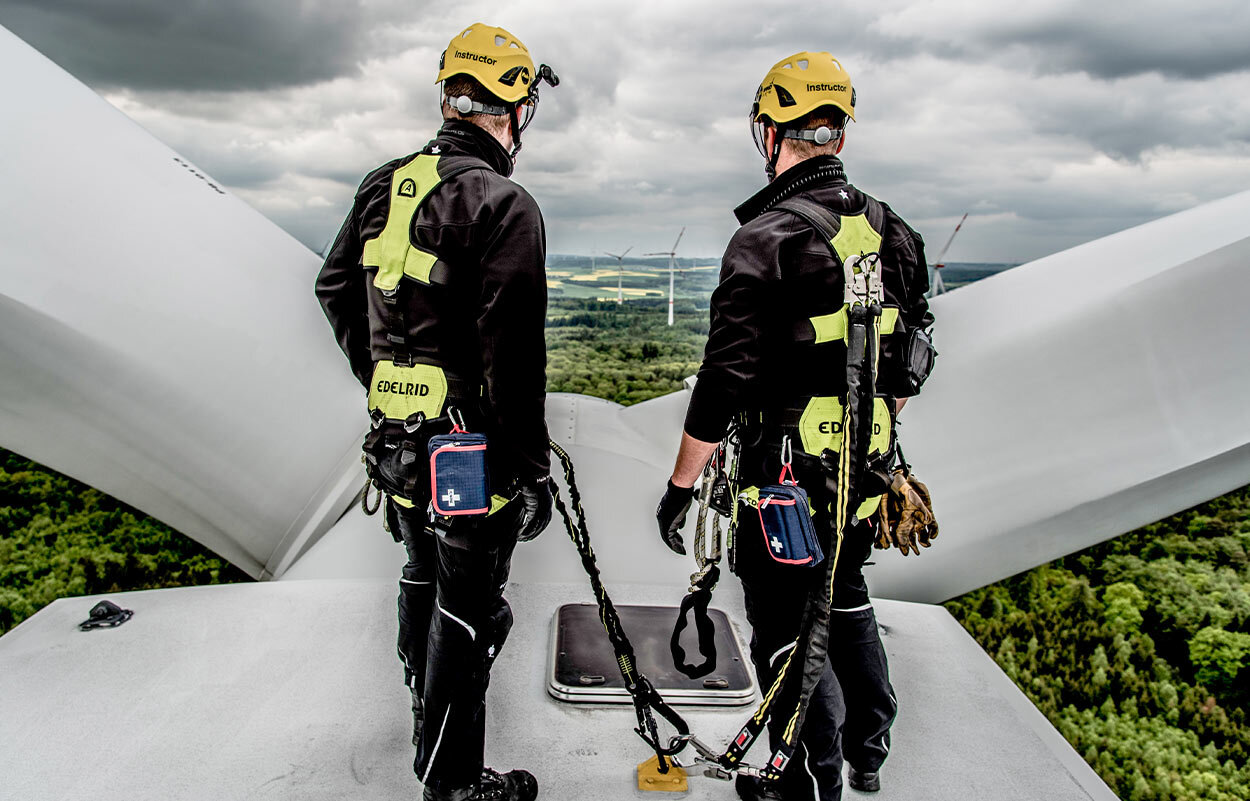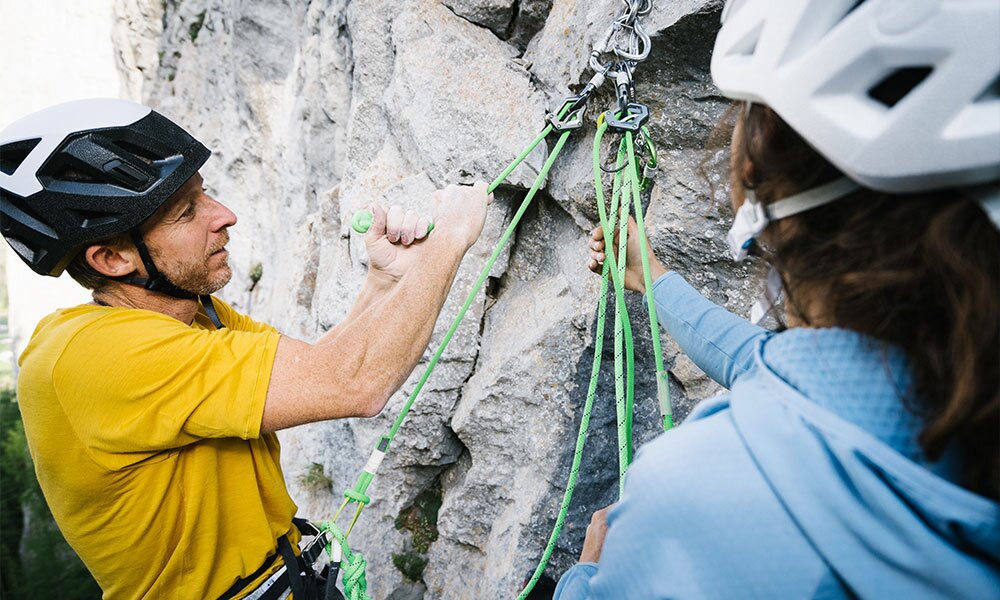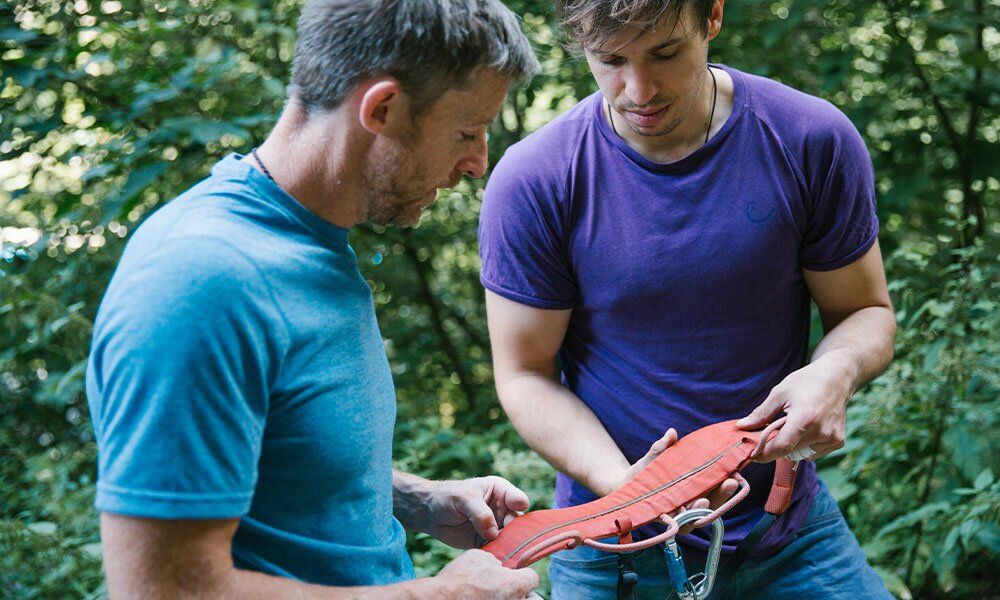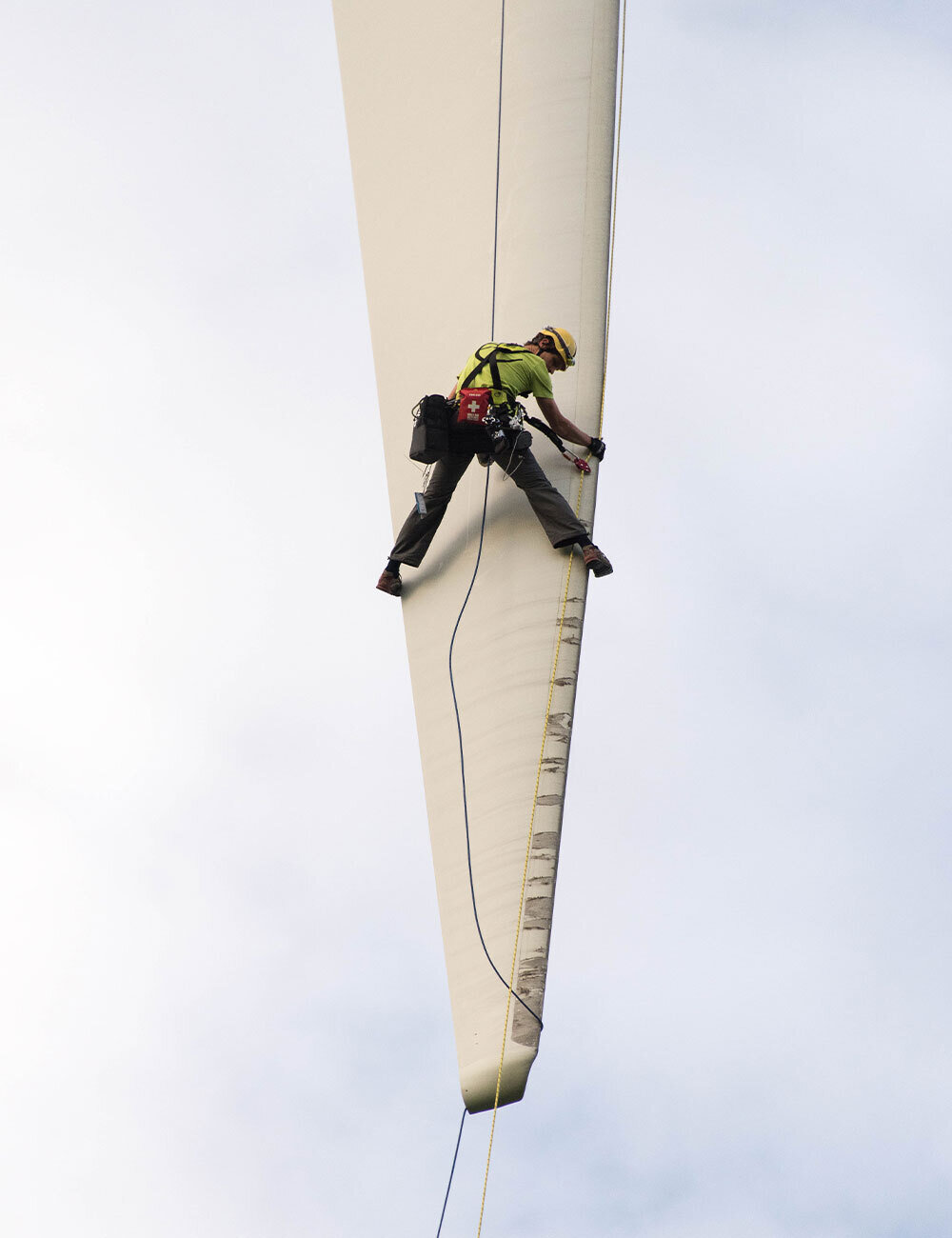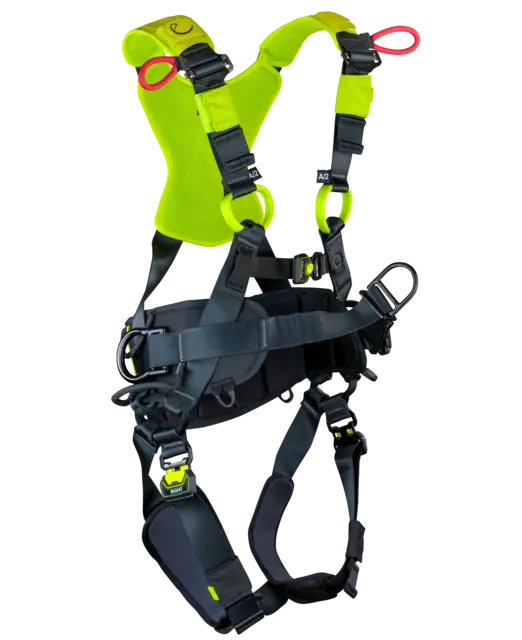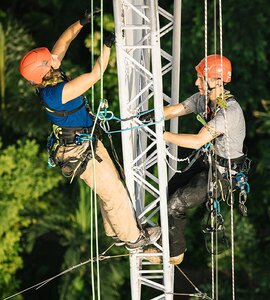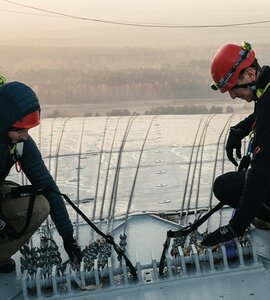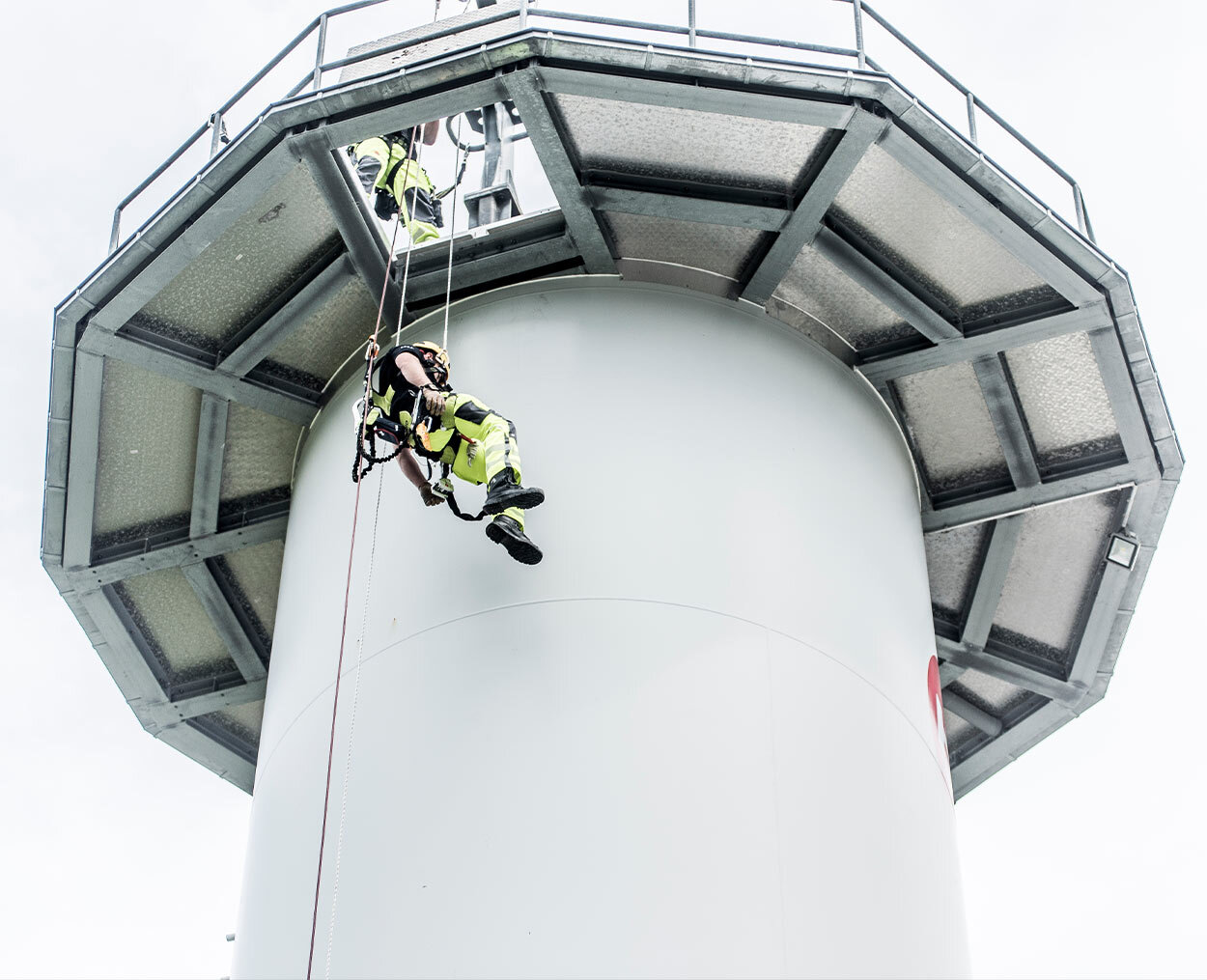Work in wind turbines presents certain challenges. These are compounded by narrow access areas and changing weather conditions. This means that wind turbine engineers also have to be experts in rescues and regularly train for them.
Companies’ rescue procedures usually require team members to be able to lower someone who has been injured in a fall down to the next platform as a minimum. This should minimize the time spent hanging freely in a harness and, in particular, the risk of hanging trauma. Further measures can then be implemented on the platform and a decision on how to proceed can be made in consultation with the emergency services. Depending on the situation, a height rescue unit may be able to take over the rescue from here.
If the wind turbine has to be evacuated, e.g. in the event of a fire, the engineers must be able to descend down the inside or the outside of the tower. An emergency plan at the bottom of the tower indicates the relevant emergency escape routes and anchor points for evacuation using a rescue device.
In all of these rescue situations, the use of a lifting rescue device is recommended. This makes it possible to simply and reliably deal with various situations such as ladder rescues, basement rescues, or evacuations.

